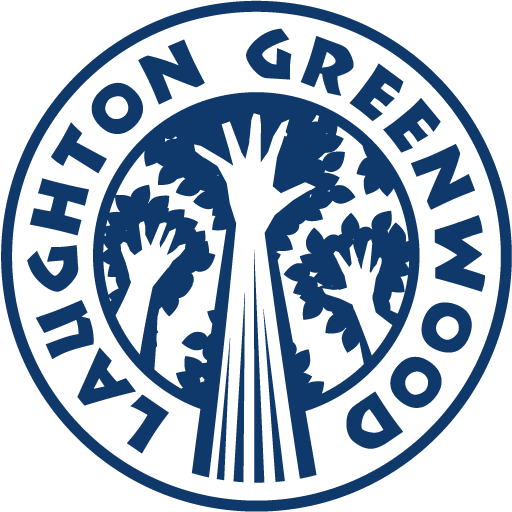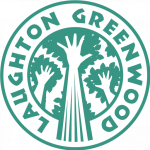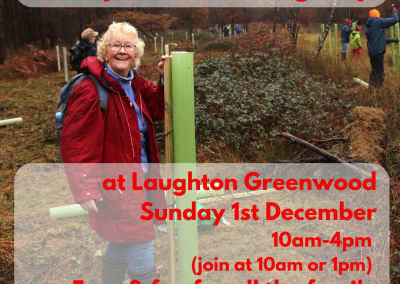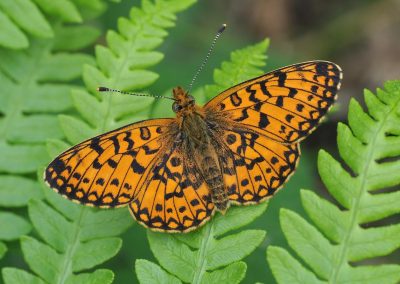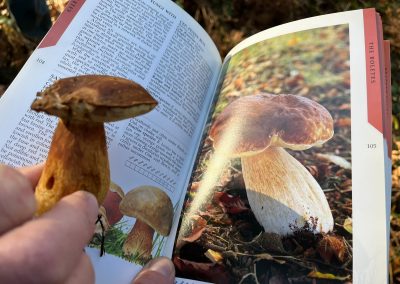We had a positive walk and talk in the wood recently with Richard Austin from Butterfly Conservation & Neil Hulme, a well-known butterfly expert and consultant. Laughton Greenwood has as our neighbour to the West, Rowland Wood Butterfly reserve, so it has always been an ambition of both sides to collaborate. Both sites are part of the ancient Vert Wood which covered most of the land between Laughton and East Hoathly.
Rowland Wood is the home of many species of butterfly & reptiles, and is the only nesting sites in the South of England for the Small Pearl-Bordered Fritillary butterfly. It is a highly endangered species. The ultimate hope of Rowland Wood (31 hectares) and Laughton Greenwood (71 hectare) is that the Fritillary will flutter over Park Lane and begin to colonise Laughton Greenwood as well as its current reserve. This would make its survival more likely.

(Photo: Bob Eade, Butterfly Conservation)
Richard explained to us that our wood is perfect for these species of butterflies, because it is so wet. With climate change many woods in the UK are drying up. But Laughton Greenwood is still wet most of the year. Neil said that until the recent thinning, our wood has been rather dark and dense for fritillaries.
This summer and autumn we have been thinning the conifers, and this makes the wood much more attractive. “The secret is to open up the paths and bring light into the wood” said Neil. “The structure now is lovely, this thinning has changed everything”.

Thinning the conifers has brought more light into the wood
Another positive feature was the presence of plenty of violets. This wildflower is the essential diet of fritillary butterflies. Butterfly Conservation might possibly consider an introduction scheme in the future, but would like us to carry out a survey for violets in the spring. The task, which can be carried out by anyone with a little training, is to assess which parts of the wood have most violet. If you are interested in helping with this in spring, please get in touch.
